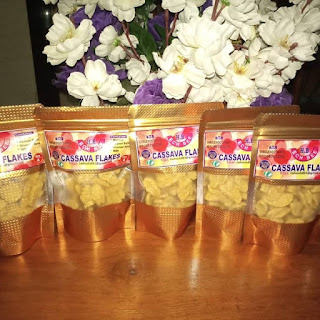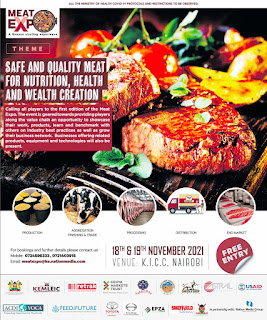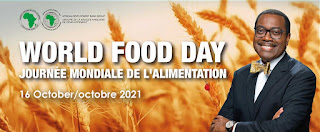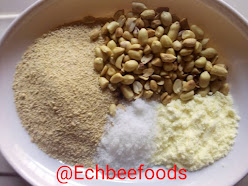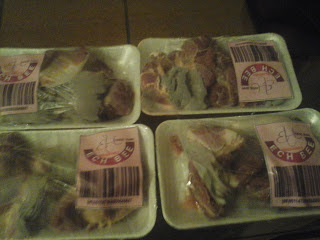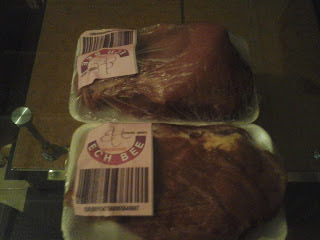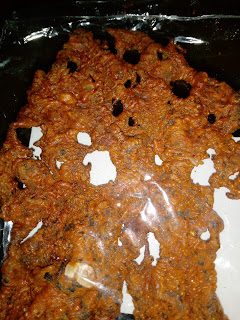Agribusiness, Agriculture, Veterinary Medicine, Cassava, Garri, food security, Agritech and the Red Meat Value Chain.
Monday, November 29, 2021
Saturday, November 27, 2021
Thursday, November 25, 2021
Tuesday, November 23, 2021
Harness the power of crowd sourcing to improve your business.
How to use the power of the crowd to start a business, scale and dominate your sector.
The most successful businesses are built on aggregation, a combination of various teams to deliver a product or service. Business success is about people, process and the tools.
As businesses have become more aware of both the popularity and effectiveness of crowd sourcing, new tools, platforms and strategies have emerged to adopt the practice more effectively.
How do you want to combine the factors of production intelligently to solve a friction in the market? How do you built a relevant team with your tools?
The world today is a global village creating more opportunities for collaboration.
You want to start a business,solve a problem or create an exceptional product? use the crowd sourcing technique. Do you know why apple products are highly rated ? a crowd sourcing technique. Getting the very best into your business by understanding the customer experience.
Top brands like Pepsi, Coca-Cola and Oreo are turning to the crowd. It’s not only the popular (and cheap) thing to do. It’s good marketing.
“It is simply becoming attractive because it’s a way of getting ideas through others,” said Ryan Mack, director of strategy at Carrot Creative, a social agency. “No one understands brands better than consumers and the best ideas aren’t necessarily coming from the marketing professionals. The idea is to tap into the collective knowledge of consumers.”
Monday, November 22, 2021
Digital transformation: the future is here.
The collective intelligence of crowds is increasingly becoming a tool for solving various issues for many companies and organizations. However, these are often very specific and secondary tasks. More positively, at least three inherent factors give collective intelligence truly enormous potential for solving the most important and complicated business issues.
Agribusiness: creating innovative products using S.C.A.M.P.E.R.
Monday, November 8, 2021
Agribusiness: startup in the meat industry.
FrieslandCampina builds mobile yogurt factory for Nigeria.
FrieslandCampina builds mobile yogurt factory for Nigeria FrieslandCampina has built a mobile yogurt plant in Nigeria.
Sunday, November 7, 2021
E-Livestock Global Launch Mastercard Blockchain-Based Solution to Bring Visibility to the Cattle Industry in Zimbabwe.
E-Livestock Global today launched a first-of-its kind solution powered by Mastercard’s blockchain-based Provenance solution, empowering Zimbabwean farmers to prove the origin and health records of their cattle, while reducing risks to buyers.
AgTech value depends on data.
AgTech is best understood simply as the intersection between agriculture and technology. It's the application and coming together on farm of digital software, like tools for analysing imagery, with digital hardware, like drones. AgTech also includes products and services enabled by technology along the agriculture value chain, from "fintech" or financial technology, through to logistics and to the consumer. The breadth of scope in AgTech is only matched by its potential.
World food prices reach highest level in more than a decade, says FAO
The lesson of the FAO director: “This is how we feed the world”
UNESCO and FAO Trains Pastoralist Livelihood and Education Field School (PLEFS) Community facilitators and supervisors in Rumbek, South Sudan.
Saturday, November 6, 2021
Agribusiness: KICC Meat Expo.
Health links are key to preventing future pandemics.
Importance of One Health for COVID-19 and Future Pandemics
Namibia now a net importer of controlled meat products
Friday, November 5, 2021
Flood-mapping tool could change how agricultural planning works
Wednesday, November 3, 2021
Agribusiness: Jack Ma visits Dutch greenhouses .
Recycled plastic films for greenhouse coverings.
Horticulture recyclability: what are the eco-friendly alternatives?
Seedless snack peppers latest result of change in breeding programme.
Snack peppers have been a growth segment for years. New in this segment is a red seedless snack pepper by Eminent Seeds, which will be available on the shelves year-round for the first time next year.
Agribusiness, the most successful way to start in India in 2021?.
In India, agriculture employs more than 60% of the workforce and is successful despite the AIDS epidemic. India’s agriculture business has great market potential as its population grows steadily.
Researchers identify key indicators for ranch sustainability.
Beef supply chain emissions can be reduced by more than 30% by 2030.
How to use Ear tags to detect signs of cattle heat and stress.
Global Food Prices Set To Soar As The Oil And Gas Crunch Continues.
Oil and gas prices have risen dramatically this year as a result of under investment and recovering demand.·Higher fuel prices are weighing on global food supply chains, with transportation and farming costs continuing to climb. ·
UNIDO Trains 42, 000 Nigerian Entrepreneurs In Six Years.
The United Nations Indus trial Organisation (UNIDO), says it has trained 42,000 Nigerian entrepreneurs from 2016 till date.
Tuesday, October 19, 2021
Agribusiness: how to eat meat without harming animals.
What if you could eat chicken nuggets without harming a chicken? It's possible through "cellular agriculture," says Isha Datar. In a talk about cutting-edge science, she explains how this new means of food production makes it possible to eat meat without the negative consequences of industrial farming, and how it could fundamentally change our food systems for the better. "It's our once-in-a-lifetime opportunity to get a second chance at agriculture," she says.
<div style="max-
Agribusiness : How to calculate dressing percentage in slaughtered cattle.
Cattle business is no doubt profitable but you can actually calculate the profit if you track the numbers, yes! do the math.
Cattle business can be broadly divided into:1) sale of live animals. 2) buy the animal, fatten and sell. 3) buy, slaughter and sell.
How do you calculate the meat to expect from the carcass ? many people believe that the live weight of the animal is what to expect when animal is slaughtered. A lot of people are often surprised at quantity of meat after processing because dressing percentage is different from live weight.
The concept of dressing percentage is key to profit calculation in cattle business, this is the math critical to business evaluation.
What is dressing percentage and how do you do the math? The dressing percentage is the portion of the live weight that results in hot carcass weight.
What is the hot carcass weight? this is the weight of the unchilled carcass after the head,internal organs and hides have been removed. The hot carcass weight for cattle is approximately about 60-64% of the live animal weight. The hot carcass weight can vary from one animal to another depending on some factors.
The dressing percentage = hot carcass weight / live weight X 100.
If an animal weighs 300 kg, working with 62.5% as hot carcass weight means the dressing percentage will be: 187.5 /300 X 100= 62.5.
The dressing percentage used in the meat industry does not equate to amount of beef that will be available for sale because the carcass will be divided into various meat cuts.
The whole animal is cut into halves and separated into front and hind quarters. These quarters are separated into primal cuts ,this is referred to as breaking down the carcass. The amount of beef available can be affected by amount of fat in carcass which will be trimmed off or the size /weight of bone because bone can weigh more.
The more bone is left in the beef cut the higher the yield percentage but when retail cuts are boneless then the percentage yield will be lower.
This calculation is a template to determine profit whether you are supplying beef using different cuts or you are selling retail.
Saturday, October 16, 2021
Food safety: Global call to reduce antimicrobial use in healthy animals.
World leaders have called for an urgent reduction in the amount of antimicrobial drugs, including antibiotics, used in food systems.
The Global Leaders Group on Antimicrobial Resistance said countries must stop the use of medically important antimicrobial drugs to promote growth in healthy animals.
Antimicrobial drugs are also given to animals for veterinary purposes to treat and prevent disease.
Mitigation measures
A top priority is to reduce the use of drugs that are of the greatest importance to treat diseases in humans, animals and plants.
Antimicrobial resistance (AMR) in bacteria can make foodborne infections such as Campylobacter and Salmonella harder to treat. Experts said climate change may also be contributing to an increase in AMR.
“We need urgent action to win the race against AMR. The longer the world delays, the greater the costs will be, in terms of costs to health systems, costs to food systems, costs to economies, and costs in lives and livelihoods,” he said.
“We need to invest in human health, animal health, plant, food and environmental eco-systems to properly respond to the growing threat of AMR. Many countries have national action plans on AMR but too few are funded for implementation.
Agribusiness: celebrating world food day by charting innovative paths to increase productivity.
Friday, October 8, 2021
Agribusiness :How to use circular economy to boost productivity in dairy value chain.
The circular economy is a
new approach to the reduce-reuse-recycle model.
The circular economy has
the added advantage of not only making products or by-products go back to
production cycles it ensures sustainability of business and environment.
What is the circular economy and how can this
be implemented in the dairy value chain?.
Circular economy is a model of production
/consumption that involves the use, reuse and recycling of products, byproducts
and materials of production to create a sustainable cycle of production and
consumption.
Dairy industry is based on
circular production cycles with the dairy and Agri-food sector sharing a
history that dates back to early dairy business.
The use of pasture land
for feeding dairy cows, by growing different crops on rotated pieces of land,
by fertilizing the land with animal’s waste and at the same time keeping
animals as a long-term stock of nutrients, the sector builds on the long and deep
knowledge of humankind.
Dairy cows have a unique
ability to consume non-edible feed stocks and turn them into a very nutritious
protein that humans can eat.
The concept of the circular economy is to look
at the cycle of production and identify points or areas in the cycle that can
be redirected into the production phase to achieve the following:
1)
Reduce waste and
the resultant pressure on the environment by creating clean alternatives.
2) Reduce cost of production by reusing some inputs or
by-products thus increasing profit margin.
3) Create new channels of production by creating new
viable products from existing products.
In the dairy industry the circular economy is employed in the following ways:
1)
The waste from
cows provides a source of fertilizer that can be put back into the farm, it is
also fed into bio digester thus helping to curb methane emissions and produce a
renewable energy source for the farm.
2)
Cows utilize the
grazing lands as well providing a source
of milk and natural fertilizer, and at the end of life the cow can be converted
into a variety of products, such as beef, pet food, and leather goods
3)
Whey, a co-product
of the cheese-making process was once put onto land, or fed to pigs, but is now
being used as high-value protein concentrates for specific human nutrition
(sports, infants, and the elderly) in a growing market, and in special cases,
for young animal feed.
4)
Nutrient
recycling from waste water treatment plants sludge from dairy processing:
digestate (sludge output from a digester) e.g. from digesting manure or food
waste is of outmost importance for a circular economy to function properly
(whilst guaranteeing and safeguarding food safety and animal health).
5)
Waste to
electricity: using the biogas from the digester to produce electricity. The
heat will be redirected to the stalls to keep the facility warm, thus also
increasing productivity at reduced cost.
6)
Cow mats produced
from hide also boosts productivity by increasing the comfort of the animals
thus stimulating more milk production.
Friday, October 1, 2021
The Circular Economy in Agriculture and Sustainable Development Goals.
Circular economy, a new model of production based on the reduce,reuse and recycle but with emphasis on turning products/ by products to inputs in the cycle of production.
The benefits of the circular economy are enormous but can be to the sustainable development goals.(SDGS).
The circular economy results in more food production using sustainable methods, thus aligning with zero hunger .(sdg2)
The recycling model of turning some products to inputs, reduces waste, provides new forms of clean and affordable energy.
This model reduces the pressure on the environment by turning waste to wealth, thus combating climate action while building sustainable cities and communities.(SDG 13 and 11).
The reuse of waste water by recycling also provides clean water while making environment clean by preventing run-off of waste water thus maintaining sanitation standards.(SDG 6).
The circular economy is a paradigm shift from the linear economy by using innovative methods and strategies to improve production cycle to increase profit while curbing waste which translates to building sustainable industry,infrastructure with innovative models.(SDG 9)
The production cycle in circular economy will open up opportunities creating decent work and economic growth. (SDG 8)
The circular economy in Agriculture aligns with the sustainable development goals also by ensuring life on land, below water are safe leading to responsible consumption and production. SDG14,15 and 12)
The circular economy in the poultry sector:1) waste collected and turned to energy.
2) Feathers recycled, reused in fashion and construction industry reducing pressure of waste dumping in environment while creating wealth.
3)Feathers as raw materials for animal feed, feather meal.
4) Feathers as raw materials in creative industry, fashion and arts increasing opportunities for export of products while creating jobs and reducing climate action.
4)Innovative feeding methods that increases productivity without increasing cost of production by using feed stuff that are noncompetitive.
5) Eggs turned egg powder an innovative product to curb egg glut, create a handy method to transport eggs while increasing shelf life.
6) Egg shells turned to calcium source for animals and also shells used as raw material for scouring powder.
7)Egg shells also used as raw material in arts and crafts.
8)Egg shells turned to crockery,
The opportunities are endless, the cycle continues. Food to waste and waste to food, energy and other products.
Sunday, August 15, 2021
Agribusiness: Building a garri empire with innovative ideas.
Echbee Foods, turning ordinary garri to extraordinary products. We are building a garri empire one recipe at a time providing nutritious food for children, empowering women and ensuring food security.
Why garri? why not? There is no home in Africa where garri is not on the menu at least twice a day, crunch the numbers and see the possibilities. If a larger % of the population eat garri, the cassava is here in the country, processing is done here then there is a market, a perpetual market.
Introduction of garri to people is not necessary the catch here is to show how ordinary garri can be nutritious and affordable. Garri is easily accessible, affordable and a larger portion of the population are accustomed to the food.
Echbee foods thus decided to fortify what was already common in most homes to achieve our purpose of balanced meal with garri. Garri which is the most common by -product is food for over 800 million people in the world, thus fortifying the garri to produce a highly nutritious cereal can generate over 120 billion naira as revenue.
Welcome to the garri empire, a world of possibilities. We are changing the way people eat garri, one recipe at a time.
The signature product of Echbee foods is our cassava flakes, which can be a snack or cereal.
Saturday, August 14, 2021
Promoting Agribusiness with Value Chain Development.
 |
| Dr. Henrietta Bolanle Ojuri |
Dr. Echbee, my resume: read
Value chain strategist.
Business development.
Waste to wealth advocate.
Design thinking.
Tuesday, May 25, 2021
Agribusiness: How to develop a gender -sensitive value chain.
Gender equality to achieve zero hunger, food security and a sustainable food systems. Developing a gender sensitive value chain will entail mapping out activities within the chain and analyzing actions of operators and key players within the chain.
One of the approaches commonly used to access processes and actors contributing to food systems and to determine which actions to undertake is the value chain approach. Value chains are key components of agrifood systems and to better understand gender- based constraints a mapping of activities are necessary.
Activities that will monitor tasks and those assigned tasks within the food production cycle such as interactive sessions with players within the food chain use of surveys, questionnaires and gender -based focal groups are important to pin point constraints and also provide a platform to champion necessary actions.
How to conduct a gender sensitive value chain analysis.?
Choose the value chain of interest then :
1) Carry out a gender sensitive value chain mapping by going through all activities within the chain and matching tasks against gender.
2) Identify gender based constraints along the chain .
3) Analyze the gender based constraints and proffer solutions.
Agribusiness : creating gender -sensitive value chain.
Gender equality is the fifth sustainable development goal(SDG) and to achieve zero hunger, food security with sustainable food systems there is the need for developing gender sensitive value chains.
There is a gender -sensitive value chain frame work developed by Food and Agricultural organisation which has added 2 components to the core value chains.
The frame work looks or analyzes the value chain based on individual and household level of involvement in the production circle.. This analysis will enumerate gender-based constraints along the production cycle as well as along nodes of production making it easy to proffer solutions.
The adoption of the SDG goals and the execution necessitates the need to reshape and restructure our food systems to be:1) More inclusive of the marginalized population.
2)Environmentally sustainable. 3)Capable of delivering healthy diets.
Why is gender relevant to value chains?
48% of Agricultural labor force in the low income countries/ under developed/developing countries are women.
The contributions of women to production and value chain development are usually not acknowledged,because the services rendered are usually not rewarded with wages as most of the work are regarded as an extension of the domestic chores.
The analysis of operations and actors within the food chain and along the production cycle will show constraints encountered by players and also give an idea how to address the constraints.
Women within the value chain are challenged in terms of access to land, livestock ownership, credit facilities, access to information,access to technology and education. These constraints are fundamental and when tackled will create gender sensitive value chains were contributions of women will be highlighted, addressed and rewarded.
Empowerment is the key to developing gender-sensitive value chains,where women gain power and control over their lives and acquire ability to make strategic choices.
Education is a chief component of the necessary action to stop gender -based constraints in value chains.
Lets access the constraints in a value chain and proffer solutions.: Cassava value chain.
Saturday, May 8, 2021
RED MEAT VALUE CHAIN: Processing And Packaging Options.
AGRIBUSINESS: MEAT SHARING AND CROWD COW IN THE RED MEAT VALUE CHAIN.
We have been discussing about franchising as an option in the red meat value chain. Discussions have spanned various models of making profit in the red meat value chain from owning an abattoir to running a meat shop.
The force of collaborations in form of franchising to grow a business is a tested and proven strategy. Crowd sourcing method can be remolded and used in the red meat value chain. Meat sharing aptly termed crowd cow. scenario 4
Meat sharing and crowd cow: interested in the red meat value chain but dont fit into any other highlighted options? Then this is for you.
Meat sharing and crowd cow; this method allows various individuals to buy parts of a cow, the cow is only slaughtered when all parts are sold. These are then dispatched to individuals or they pick up at your shop.
Meat sharing and crowd cow is risk free because interested buyers pay before cow is delivered. The business strategy is crowdfunding, different individuals are paying for shares in a cow. It is the business owner that will determine price per share based on the price of cow he intends to purchase.
The meat sharing and crowd cow needs an advertising platform to get people informed of operation. The platform will announce dates and time of crowd cow with timeline to opt -in. When the target is reached then the business owner moves in the abattoir to slaughter and pack the beef as desired by investor.
Advantages of this model is 1) No risk attached because you pay to opt-in. 2) No waste or loss because the client has paid and must pick up . 3) No extra cost of freezing left-overs. 4) Business is based on demand per time, no slaughtering on assumptions. 5) Minimal cost of start -up, a social media page and means of dispatch is all you need.
Wednesday, May 5, 2021
Franchising : A business growth model.
Franchising your business to expand frontiers and smile to the bank.. Thinking of starting a business? use the franchise method to shorten the learning curve. Are you an established brand thinking of scaling up? thinking of creating a global influence? use the franchising method, it is a win- win situation.
One shop, one brand scattered all over creating employment and servicing more customers then franchising is the model.
Franchising in agribusiness,..read more here
Agribusiness : leveraging on the franchise model in the red meat value chain to create wealth.
How to grow your niche in the red meat value chain using the franchise model.Franchising as simple as it looks, its a powerful business tool for expansion , growth. and wealth creation.
Franchising in the red meat value chain is an easy strategy to expand the red meat value chain, in terms of investors, unemployed youths and cattle merchants.
Franchising in the red meat value chain using meat markets and hubs as our focus. You want to tap into the red meat value chain? want to have a meat market or hub in your area? you are young but want a side hustle or you are young and unemployed with interest in red meat business? Welcome to the red meat hub.
Franchising in the red meat value chain. How will you key in to the business? Take a trip to a registered abattoir and watch operations in the mechanized abattoir. Follow through the process and link up with operators that have a brand they promote or operators that just slaughter ,cut and package for you for onward delivery to your store.
Scenario 1: abattoir operator has a brand that sells packed beef, and beef products. Meet the operator, discuss on franchising his brand in your neighborhood and beyond.
The franchisee agrees to terms of operation and he starts to collect beef,branded by abattoir operator at minimal cost. The advantage of this model is that franchisee provides outlet, pays for startup cost ( employers) along side other logistics, the brand expands all over.
 Dr. Henrietta Ojuri, value chain strategist.
Dr. Henrietta Ojuri, value chain strategist.Scenario 2: Abattoir operator has a beef brand that markets beef an beef products. The operator creates an investment pool by rolling out investment plans by way of franchising. The investors pay a token to join the investment pool and the operator provides branded refrigerators for investors. Investors collect specified amount of products without paying upfront but will remit money on specified dates as stipulated in the contract.
Advantage here is there is a pool of investors creating brand awareness all over, there is a token payable by startup and this model will attract young entrepreneurs in the red meat value chain.
Scenario 3: There is no brand you want to hook up with but still interested? Go to the abattoir, mechanized slaughtering and hook up with operator. Buy a cow, slaughter in the mechanized line, cut to different sizes(1kg/2kg) then get a cooling van/refrigerated van to transport meat to your location. The different stages attracts costs , so how do you rejig this model? Next time, we conclude.
Agribusiness ideas.
Popular Posts
-
This is an awareness campaign drive to educate kids about rabies . This campaign will birth the creation of the dog health club in schools. ...
-
Five ways agriculture could benefit from artificial intelligence. Agriculture is the industry that accompanied the evolution of humanity ...
-
Funding opportunities for agricultural projects. International Tropical Timber Organization — Freezailah Fellowships 2017. ITTO makes grant...
-
AGRIBUSINESS :How to weave cash from cassava bags cassava bags.Cassava can be transformed into a biodegradable paper which is not only...
-
Organic pepper production above the soil in new system NatureFresh Farms,this is a breakthrough in sustainable organic cultivation. Ove...
-
Bovine tuberculosis a major source of human tuberculosis in Nigeria. According to recent reports Nigeria ranks 4th in TB infection wor...
AGRIBUSINESS EDUCATION.
Translate
I-CONNECT -AGRICULTURE
AGRIBUSINESS TIPS.
AGRIBUSINESS.
The Agriculture Daily
veterinarymedicineechbeebolanle-ojuri.blogspot.com Cassava: benefits of garri as a fermented food. Cassava processing involves fermentation which is a plus for gut health. The fermentation process removes the cyanogenic glucosides present in the fres...

